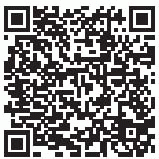Peripheral Facial Nerve Palsy
OBJECTIVES
To name the most common symptoms of facial nerve palsy.
To name the distinguishing characteristics of an upper motor neuron and a lower motor neuron facial weakness.
To emphasize the importance of a thorough otoneurologic examination in patients suspected of having Bell palsy.
To name the most common treatments for Bell palsy.
VIGNETTE
A 65-year-old man with a history of carcinoid tumor had new onset of left facial weakness.
 |
The facial nerve is a mixed motor-sensory and parasympathetic nerve supplying the muscles of facial expression, mucous membranes of the oral and nasal cavities, and salivary and lacrimal glands. It also conveys taste sensation from the anterior two-thirds of the tongue via the lingual nerve and chorda tympani. Sudden facial weakness over the course of a few hours is the most common symptom of a peripheral facial nerve palsy. Pain around the ear or mastoid region may be present. Patients may also complain of numbness or an unusual sensation of the face, but sensory testing should be normal. Depending upon the site of the lesion, there may be associated impairment of taste, lacrimation, or hyperacusis. Taste may be impaired if the lesion is proximal to the chorda tympani. Patients may complain of a metallic taste of the mouth. Sounds may be exaggerated (hyperacusis) if a lesion is proximal to the nerve branch supplying the stapedius muscle, which typically helps dampen loud sounds. Not uncommonly, patients may also have variable degrees of eye dryness.
Stay updated, free articles. Join our Telegram channel

Full access? Get Clinical Tree








